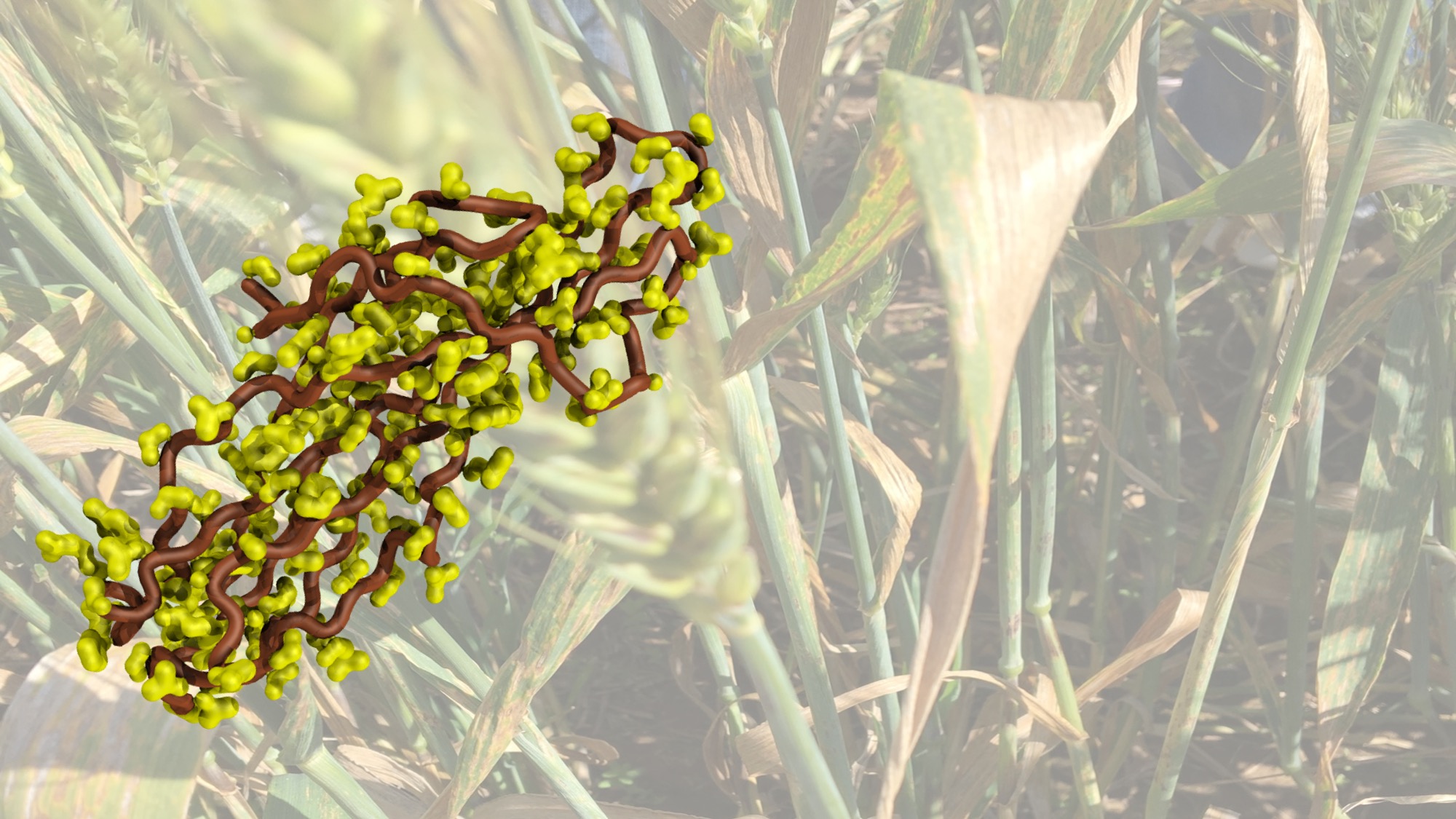How do effector proteins from necrotrophic fungi cause disease in wheat
Structural studies of effector proteins from necrotrophic fungal pathogens of wheat
Research themes
Project status
Content navigation
About

There are a number of possible student projects that relate to the aims of this work. The project will involve the use of molecular biology, protein biochemistry, structural biology, synthetic biology and plant biology techniques. Top-up scholarships for both honours and PhD students have been awarded to current students in my laboratory. I will support these applications for future students.
Background
Crop losses caused by plant diseases present a significant economic, environmental and social challenge in a world facing increased demands on food, fibre and biofuels. Parastagonospora nodorum is an economically important necrotrophic fungal pathogen of wheat. During infection, P. nodorum uses effector proteins to target sensitivity gene products in wheat. This process, known as necrotrophic effector-triggered susceptibility, results in plant cell death and disease. This project aims to investigate the structural basis of necrotrophic effector-triggered susceptibility in the P. nodorum – wheat pathosystem. The new knowledge will support long-term objectives of developing strategies to protect wheat from necrotrophic fungi.
We have recently solved the first crystal structure of an effector protein from P. nodorum, SnTox3. We know that SnTox3 promotes pathogen virulence by targeting PR1 proteins in the plant and also stimulates Snn3-mediated cell death. This project aims to understand the structural basis of these functions.

Figure 3: Crystal structure of SnTox3 shows a novel effector fold. (a) Ribbon diagram of SnTox3, showing the overall β-barrel fold, with disulfide bonds shown in yellow. Disulfide-bond connectivities are shown on the SnTox3 ribbon diagram, with the residues labelled accordingly. (b) The amino-acid sequence of SnTox3, showing secondary structure elements; disulfide bond connectivity is shown with gold lines. (c) Structure superimposition of SnTox3 (purple) and LukGH (PDB ID: 4TW1; gold). Left panel: superposition of SnTox3 (purple) with one protomer of LukGH (chain A), showing structural similarity with only the cap domain and not the rim and stem domains, which are required for pore formation. Right panel: superimposition of SnTox3 (purple) with one protomer (orange) in the pore complex of LukGH (gold).


